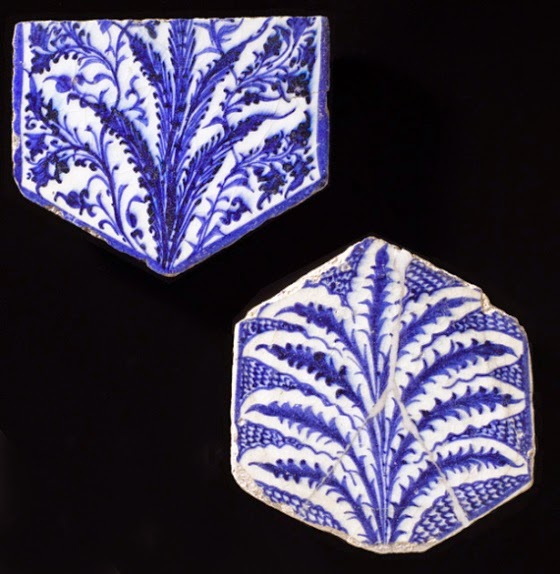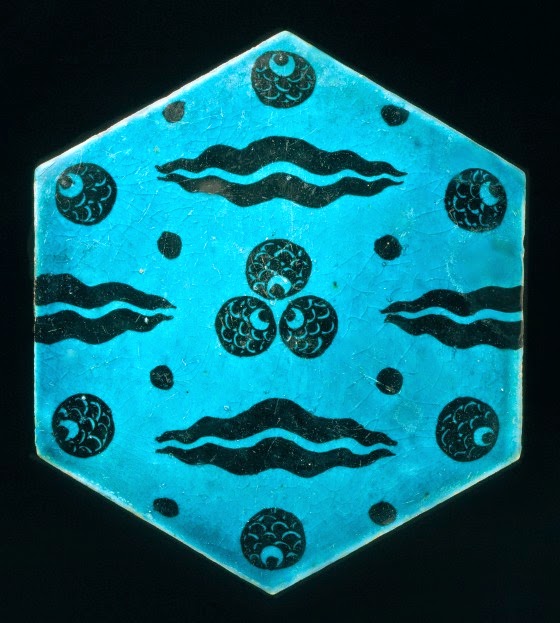 |
| Egypt or Syria, early 15th century
Architecture; Architectural Elements
Fritware, underglaze painted
|
I have some access to clay and kilns so this will be a natural potential area for experimentation. The hexagon shape is produced by the 3 rhombi together. The resulting tessellation of the simple geometry offers me a grid-like connectivity that is different than anything I have worked with before.
The rhombus shapes that I spent some time with at the museum were not listed on their site, but the surface of those particular shapes inspired me to make this batch with an “apparent age” of distressed looking surface. This stage of the project does not show the look that I am shooting for, but will be that way once glazed and fired. This group is currently drying and waiting for the bisque fire. Probably on Friday or Saturday. Hopefully I can have a bit more of the process completed by Monday’s meeting.
The motifs that keep going through my sketches are becoming important as I spend more time considering their origins in my process. I am working on approximately 12 rhombus and equilateral triangles here.
Some considerations of my ineptitude with math over the years seem to keep filling this idea that the construction of these shapes, and how they work together has continued to help me to enjoy the process. I see this shape a lot in my web design work in the charts for hexadecimal color that is referenced in html.
The site coding process is another uneasy form of work for me with its technical requirements and the logic that is required (not to mention the semantics involved with correct code) for things to work smoothly. It’s the invisible qualities of this type of design that has kept me working towards comfort with all of the different coding languages that need to coexist for a site to stay happy. Otherwise, when things are not working, the only way to find the problem is to revisit the site code. The beautiful experience when the missing colon or semi-colon are discovered and the site works quietly and smoothly — like a fine tuned motor.
|
Syria, Damascus, about 1600
Architecture; Architectural Elements
Fritware, underglaze-painted
|
This will utilize some mid-range clay with some mason stains and glaze to get the desired effect that I am looking for.
 |
| Our ceramic studio where my carving is under way. |

